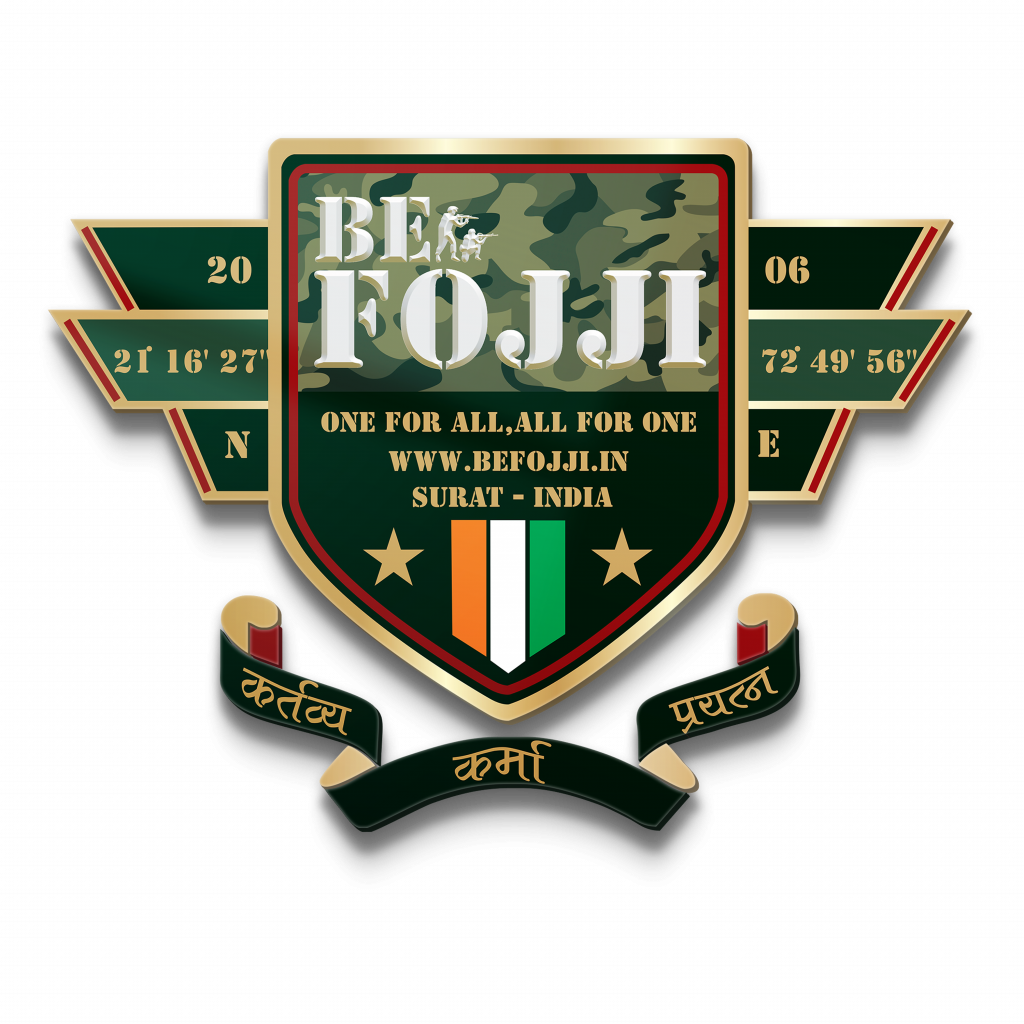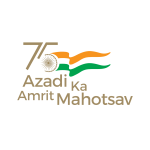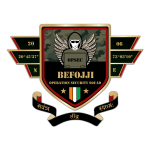This article will deal with the classification of regiments that the Indian Army operates in.
Artillery Regiment :
The Artillery Regiment is the second biggest arm of the Indian armed force and comprises very nearly one-6th of its complete quality, with the units being sorted out on a corps and divisional premise. Prior, Artillery was classed as a battle bolster arm, yet now, it is classed as a battle arm with needs moving between direct support and counter siege.
Its fundamental assignment is to command the front line with enormous capability so the adversary can neither meddle with the tasks nor build up their very own viably.
The biggest Artillery focus is situated at Nashik in Maharashtra. The regiment has commended its 175th commemoration in 2002.
The ninth Parachute Field Regiment, eleventh Field Regiment, 861 Regiment equipped with Bramhos, 170 Medium Regiment (Veer Rajput, etc are all cannons regiments of the Indian Army.
Units and their Types of equipment in Artillery :
In the Indian Army, there are 3 Artillery Divisions. They are
- 40 Artillery Division (Ambala, Haryana)(under Western Command).
- 41 Artillery Division (Pune, Maharashtra)(under Southern Command).
- 42 Artillery Division (Alwar, Rajasthan)(under South Western Command).
Light Artillery(Mortars) :
- 120 mm E1 Light Mortar
- Field Artillery
- 105mm Indian Field Gun
- 105mm Light Field Gun
- 122mm D-30 Howitzer
Medium Artillery :
- 130mm M-46 Field Gun
- 155mm Haubits FH77/B Howitzer
- 155mm Soltam Gun
- 155mm Dhanush Gun
Self-propelled Artillery :
- 105mm FV433 Abbot self-propelled gun
- 130mm M-46 Catapult self-propelled gun
- 155mm K-9 Vajra self-propelled gun
Rocket Artillery :
- 122mm BM-21 Grad Multiple Barrel Rocket Launcher
- 214mm Pinaka Multi Barrel Rocket Launcher
- 300mm BM-30 Smerch Multiple Barrel Rocket Launcher
- S-400
Missile Artillery :
- Brahmos Missile System
- Agni Missile System
- Prithivi Missile System
Surveillance & Target Acquisition :
- ELM Mast Mobile Radar System[disambiguation needed]
- UAV Drones (Heron) System
- WLR (Weapons Locating Radar) System
- LORROS (Long Range Reconnaissance and Observation Systems)
- MBFSR (Medium Range Battlefield Surveillance Radar) System
Armored Regiment :
There are around 93 fields of the defensively covered regiments in the military. From the 65th Armored Regiment onwards, the terms ‘Rangers’ and ‘Lancer’ were apportioned.
The majority of the regiments have autonomous surveillance squadrons which comprise of tanks or heavily clad vehicles, infantry and substantial mortars.
They fill in as observation units for protected divisions free heavily clad detachments and different arrangements. These incorporate President’s Bodyguards, first Skinned Horse, second Lancers, fourth Hodson’s Horse, seventh Cavalry, and 21st Central India Horse, etc.
The well known Armored Regiments include:
| Name | Other Name(s) | Raising Date | Raising Commander | Raising Location |
| President’s Bodyguard | ||||
| 1st Horse | Skinner’s Horse, The Yellow Boys | |||
| 2nd Lancers | Gardner’s Horse | |||
| 3rd Cavalry | Flamingoes | |||
| 4 Horse | Hodson’s Horse | 1857 | ||
| 5th Armoured Regiment** | 1-Dec-83 | Lt Col J.P.S. Hanspal | Jodhpur | |
| 6th Lancers*** | 1-Feb-84 | Lt Col R.S. Deol, SM | Nabha | |
| 7th Light Cavalry | 3rd Madras Lancers, 28th Light Cavalry | 1784 | ||
| 8th Light Cavalry | 5th Madras Native Cavalry, 1st Madras Native Cavalry, 4th Nizam of Hyderabad’s Contingent Cavalry, 30th Lancers(Gordon’s Horse), 26th Prince of Wales’ Own Cavalry, 26th King George’s Own Cavalry8th King George’s Own Light Cavalry | 23 Oct 1787 | Maj Henry Darley | Arcot |
| 9th Deccan Horse | The Royal Deccan Horse | 1790 | ||
| 10th Armoured Regiment | 16-Apr-84 | Lt Col Kulwant Singh | Ahmednagar | |
| 11th Armoured Regiment | 7-May-84 | Lt Col Harjeet Singh Lamba | Kaluchak | |
| 12th Armoured Regiment | 1-Oct-84 | Lt Col L.R. Vaid | Kapurthala | |
| 13th Armoured Regiment | Triskaideca, Nightstrikers | 21-Dec-84 | Lt Col Balram Singh Mehta | Ahmednagar |
| 14 Horse | The Scinde Horse | 1838/1846 | ||
| 15th Armoured Regiment | 1-Mar-85 | Lt Col M.D. Law | Mamun | |
| 16th Light Cavalry | 1776 | |||
| 17 Horse | The Poona Horse, Fakr-e-Hind | 15 July 1817 | Sirur | |
| 18 Cavalry | 31 January 1842 | |||
| 19th Armoured Regiment | ||||
| 20th Lancers | 1857/1858 | Lt Col Umrao Singh | Ahmednagar | |
| Re-raised 10 July 1956 | ||||
| Central India Horse | 21st King George V’s Own Horse | |||
| 41st Armoured Regiment | 1-Jul-80 | Lt Col J P Singh | Ahmednagar | |
| 42nd Armoured Regiment | 1-Jan-81 | Lt Col Ranjit Talwar | Babina | |
| 43rd Armoured Regiment | 1981 | Lt Col B M Kapur | Ahmednagar | |
| 44 Armoured Regiment | 15-Dec-81 | Lt Col D.S. Dhillon | Ahmednagar | |
| 45th Cavalry | Paintalis Risala | 16-May-65 | Lt Col S.K. Candade | New Delhi |
| 46th Armoured Regiment | Thunderbolts | 1-Jul-82 | Lt Col Prithpal Singh Sandhu | Ahmednagar |
| 47th Armoured Regiment | Penetrators | 15-Nov-82 | Lt Col Tejvir Singh Sirohi | Babina |
| 48th Armoured Regiment | 1-Dec-82 | Lt Col DS Dhadwal | Meerut | |
| 49th Armoured Regiment | Falcons | 1-Oct-83 | Lt Col J.P.S. Nakai | Ahmednagar |
| 50 Armoured Regiment | Fear Naught | Jul-89 | Lt Col A. .K Bhatia | Ahmednagar |
| 51 Armoured Regiment | The Unicorn | 15-Jul-89 | Lt Col R S Gill | |
| 52 Armoured Regiment | 1-Feb-94 | Col Jugvir Singh | Roorkee | |
| 56 Armoured Regiment | Lion Hearts | 1-Oct-11 | ||
| 61 Cavalry | 1-Oct-53 | Lt Col. Phulel Singh | Gwalior | |
| 62 Cavalry | 31-Mar-57 | Lt Col RS Butalia | Ambala | |
| 63 Cavalry | Tresath | 2-Jan-57 | Lt Col Harmandar Singh | Alwar |
| 64 Cavalry | 31-Mar-66 | Lt Col Trevor Lancelot Perry | Babina | |
| 65 Armoured Regiment | 1-Sep-66 | Lt Col K K Kaul | ||
| 66 Armoured Regiment | 1-Sep-66 | Lt Col Narinder Singh | Ahmednagar | |
| 67 Armoured Regiment | 15-Sep-67 | Lt Col Niranjan Singh Cheema | ||
| 68 Armoured Regiment | Gladiators | 1-Mar-68 | Lt Col R.N. Thumby | |
| 75 Armoured Regiment | 12-Mar-72 | Lt Col Vijai Singh | Sakna | |
| 84 Armoured Regiment | 1976 | Lt Col Tarif Singh Dhiyia | ||
| 85 Armoured Regiment | 1-Oct-76 | Lt Col D P Singh | Ahmednagar | |
| 86 Armoured Regiment | Chhiassi | 1-Mar-77 | Lt Col NS Malik | Ahmednagar |
| 89 Armoured Regiment | 1-Feb-80 | |||
| 90 Armoured Regiment | 15-Aug-79 | Lt Col Manjit Singh Sawhney | Pawan Da Chak |
Infantry Regiments :
The infantry regiment is the biggest component of the infantry division. It is a military association, not a field development. Not every one of the units of an infantry regiment battle together as one arrangement, however are scattered over different developments, for example, detachments, divisions and corps as referenced in one of my past articles. Its strategic activities and developments are composed with those of different divisions.
The infantry regiments connect with and decimate the foe in close battle during the ambush or hold its situation during the barrier. They are prepared, sorted out and prepared to utilize weapons of close battle to help its ambush weapons with heavier shoot and to give constrained regulatory help to its units.
The well known infantry regiments include:
| Regiment | Active From | Regimental Center | Motto | War Cry |
| The Brigade of the Guards | 1948 | Kamptee, Maharashtra | “Pahla hamesha pahla” (“first always first”) | “Garud ka hun bol pyare” (“I am the son of Garuda, Say O my friend”) |
| Mechanised Infantry Regiment | 1979 | Ahmednagar, Maharashtra | “Valour and faith” | “Bolo Bharat Mata ki jai” (“say victory to Mother India”) |
| Madras Regiment | 1758 | Wellington, Tamil Nadu | “Swadharme nidhanam shreyaha” (“it is a glory to die doing one’s duty”) | “Vetri vel, Veera vel” (“Brave and victorious Spear – allegory to Lord Murugan’s weapon (spear) “) |
| Thiyyar Regiment | 1887 | Thalassery,Malabar | “Chathichavane viswasikaruth, Viswasichave chathikaruth” (Never trust a cheater,Never cheat on those who trust you) | “Gurusi Devik” (Sacrifice for goddess Devi) |
| Rajputana Rifles | 1775 | Delhi Cantonment | “Veer bhogya vasundhara” (“the brave shall inherit the earth”) | “Raja Ramachandra ki jai” (“victory to King Ramachandra”) |
| Rajput Regiment | 1778 | Fatehgarh, Uttar Pradesh | “Sarvatra vijay” (“victory everywhere”) | “Bol Bajrang Bali Ki jai” (“say victory to Lord Hanuman”) |
| Dogra Regiment | 1877 | Faizabad, Uttar Pradesh | “Kartavyam anvatma” (“duty before death”) | “Jawala Mata ki jai” (“victory to Goddess Jawala”) |
| Sikh Regiment | 1846 | Ramgarh Cantonment, Jharkhand | “Nischay kar apni jeet karon” (“with determination, I will be triumphant”) | “Jo bole So Nihal, sat sri akal” (“he who cries ‘God is truth’ is ever happy”) “Wahe Guruji Da Khalsa, Wahe Guruji Di Fateh” (“The Khalsa of Waheguru is victorious”) |
| Jat Regiment | 1795 | Bareilly, Uttar Pradesh | “Sangathan va veerta” (“unity and valour”) | “Jat balwan, jai bhagwan” (“the Jat is strong, victory to God”) |
| Parachute Regiment | 1945 | Bengaluru, Karnataka | “Shatrujeet” (“the conqueror”) | “Balidan Param Dharma” (“Sacrifice Before Duty”) |
| Punjab Regiment | 1761 | Ramgarh Cantonment, Jharkhand | “Sthal wa jal” (“by land and sea”) | “Jo bole So Nihal, sat sri akal” (“he who cries ‘God is truth’ is ever happy”); “Bol Jawala Ma ki jai” (“say victory to Goddess Jawala”) |
| The Grenadiers | 1778 | Jabalpur, Madhya Pradesh | “Sarvada shaktishali (“always strong”) | “Sarvada shaktishali” (“always strong”) |
| Sikh Light Infantry | 1944 | Fatehgarh, Uttar Pradesh | “Deg teg fateh” (“prosperity in peace and victory in war”) | “Jo bole So Nihal, sat sri akal” (“he who cries ‘God is truth’ is ever happy”) |
| Maratha Light Infantry | 1768 | Belgaum, Karnataka | “Duty, honour, courage” | “Bola Shri Chhatrapati Shivaji Maharaj ki jai, Temlai Mata ki jai” (“say victory to Emperor Shivaji, victory to Goddess Temlai”) |
| The Garhwal Rifles | 1887 | Lansdowne, Uttarakhand | “Yudhaya krit nischya” (“fight with determination”) | “Badri Vishal Lal ki jai” (“victory to the Great Lord Badri Nath”) |
| Kumaon Regiment | 1813 | Ranikhet, Uttarakhand | “Parakramo vijayate” (“valour triumphs”) | “Kalika Mata ki jai” (“victory to Goddess Kali”); “Bajrang Bali ki jai” (“victory to Lord Hanuman”); “Dada Kishan ki jai” (“Victory to Dada Kishan”) |
| Assam Regiment | 1941 | Shillong, Meghalaya | “Assam vikram” (“unique valour”) | “Rhino charge” |
| Bihar Regiment | 1941 | Danapur, Bihar | “Karam hi dharam” (“work is worship”) | “Jai Bajrang Bali” (“victory to Lord Hanuman”) |
| Mahar Regiment | 1941 | Saugor, Madhya Pradesh | “Yash sidhi” (“success and attainment”) | “Bolo Hindustan ki jai” (“say victory to India”) |
| Jammu & Kashmir Rifles | 1821 | Jabalpur, Madhya Pradesh | “Prashata ranvirta” (“valour in battle is praiseworthy”) | “Durga Mata ki jai” (“victory to Goddess Durga”) |
| Jammu and Kashmir Light Infantry | 1947 | Awantipora, Jammu and Kashmir | “Balidanam vir lakshanam ” (“sacrifice is a characteristic of the brave”) | “Bharat Mata ki jai” (“victory to Mother India”) |
| Naga Regiment | 1970 | Ranikhet, Uttarakhand | “Parakramo vijayate” (“valour triumphs”) | “Jai Durga Naga” (“victory to Durga Naga”) |
| 1 Gorkha Rifles | 1815 | Subathu, Himachal Pradesh | “Kayar hunu bhanda marnu ramro” (“better to die than live like a coward”) | “Jai Ma Kali, ayo Gorkhali” (“hail Goddess Kali, here come the Gorkhas”) |
| 3 Gorkha Rifles | 1815 | Varanasi, Uttar Pradesh | “Kayar hunu bhanda marnu ramro” (“better to die than live like a coward”) | “Jai Ma Kali, ayo Gorkhali” (“hail Goddess Kali, here come the Gorkhas”) |
| 4 Gorkha Rifles | 1857 | Sabathu, Himachal Pradesh | “Kayar hunu bhanda marnu ramro” (“better to die than live like a coward”) | “Jai Ma Kali, ayo Gorkhali” (“hail Goddess Kali, here come the Gorkhas”) |
| 5 Gorkha Rifles (Frontier Force) | 1858 | Shillong, Meghalaya | “Shaurya evam nistha” (“courage and determination”) | “Jai Ma Kali, ayo Gorkhali” (“hail Goddess Kali, here come the Gorkhas”) |
| 8 Gorkha Rifles | 1824 | Shillong, Meghalaya | “Kayar hunu bhanda marnu ramro” (“better to die than live like a coward”) | “Jai Ma Kali, ayo Gorkhali” (“hail Goddess Kali, here come the Gorkhas”) |
| 9 Gorkha Rifles | 1817 | Varanasi, Uttar Pradesh | “Kayar hunu bhanda marnu ramro” (“better to die than live like a coward”) | Jai Ma Kali, Ayo Gorkhali (“hail Goddess Kali, here come the Gorkhas”) |
| 11 Gorkha Rifles | 1918-1922; from 1948 | Lucknow, Uttar Pradesh | “Yatraham vijayastatra” (“Victory resides where I reside”) | “Jai Ma Kali, Ayo Gorkhali (“hail Goddess Kali, here come the Gorkhas”) |
| Ladakh Scouts | 1963 | Ladakh, Jammu and Kashmir | “Ki ki so so Lhargyalo” (“Victory to God”) | |
| Arunachal Scouts | 2010 | Rayang, Arunachal Pradesh | ||
| Sikkim Scouts | 2013 |
Corps of Army Air Defense :
The Corps of Army Air Defense (contracted as AAD), is a functioning corps of the Indian Army and a significant confrontational development entrusted with air barriers of the nation from outside dangers. The AAD Corps is liable for the insurance of Indian air space from foe air ship and rockets, particularly beneath 5,000 feet.[3]
The historical backdrop of the AAD goes back to 1939 during the hours of the British Raj in India. The corps effectively participated in the Second World War battling for the benefit of the British Empire. Post autonomy, the corps has partaken in every one of the wars including India, beginning from the 1947 Indo-Pakistani War to the 1999 Kargil struggle.
The corps delighted in independent status from 1994, after the bifurcation of the Corps of Air Defense Artillery from the Army’s ordnance regiment. A different preparing school, the Army Air Defense College (AADC), was set up to train its work force.
Corps of Engineers :
The Corps of Engineers of the Indian Army has a long history going back to the mid-eighteenth century. The soonest existing subunit of the Corps (18 Field Company) goes back to 1777 while the Corps authoritatively perceives its introduction to the world as 1780 when the senior most gathering of the Corps, the Madras Sappers were raised.
The Corps comprises of three gatherings of battle engineers, to be specific the Madras Sappers, the Bengal Sappers and the Bombay Sappers. A gathering is generally closely resembling a regiment of Indian infantry, each gathering comprising of various engineer regiments. The architect regiment is the essential battle engineer unit, similar to an infantry brigade.
Other than the battle builds, the Corps keeps an eye on and works significant designing associations, for example, the Military Engineer Services [2], the Border Roads Organization (BRO), the Married Accommodation Project and the Survey of India.[1]
School of Military Engineering, Pune (CME) is the head specialized and strategic preparing establishment of the Indian Army Corps of Engineers.
- Madras Sappers
- Bengal Sappers
- Bombay Sappers
RESOURCE BY WIKIPEDIA
JAY HIND










